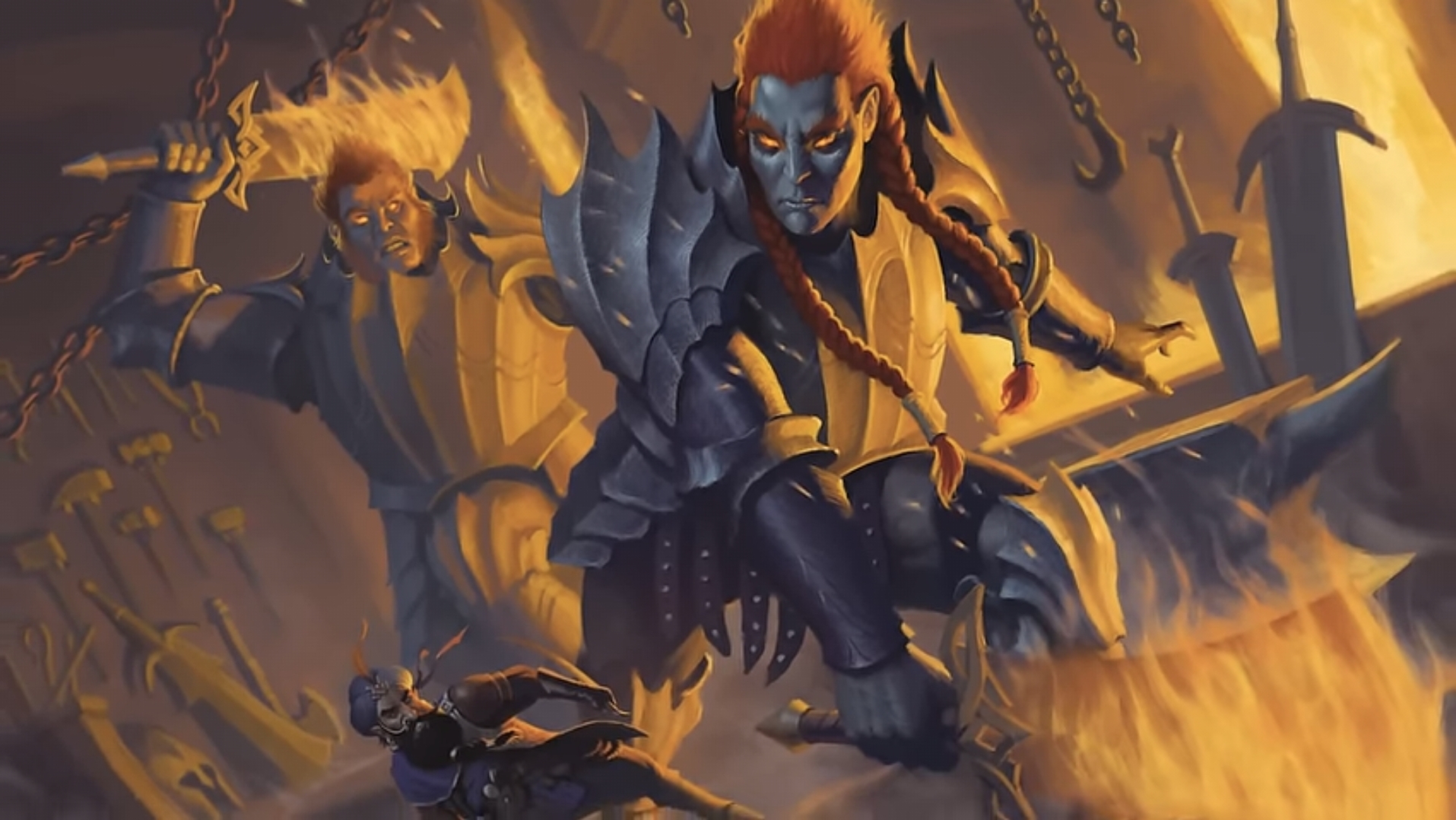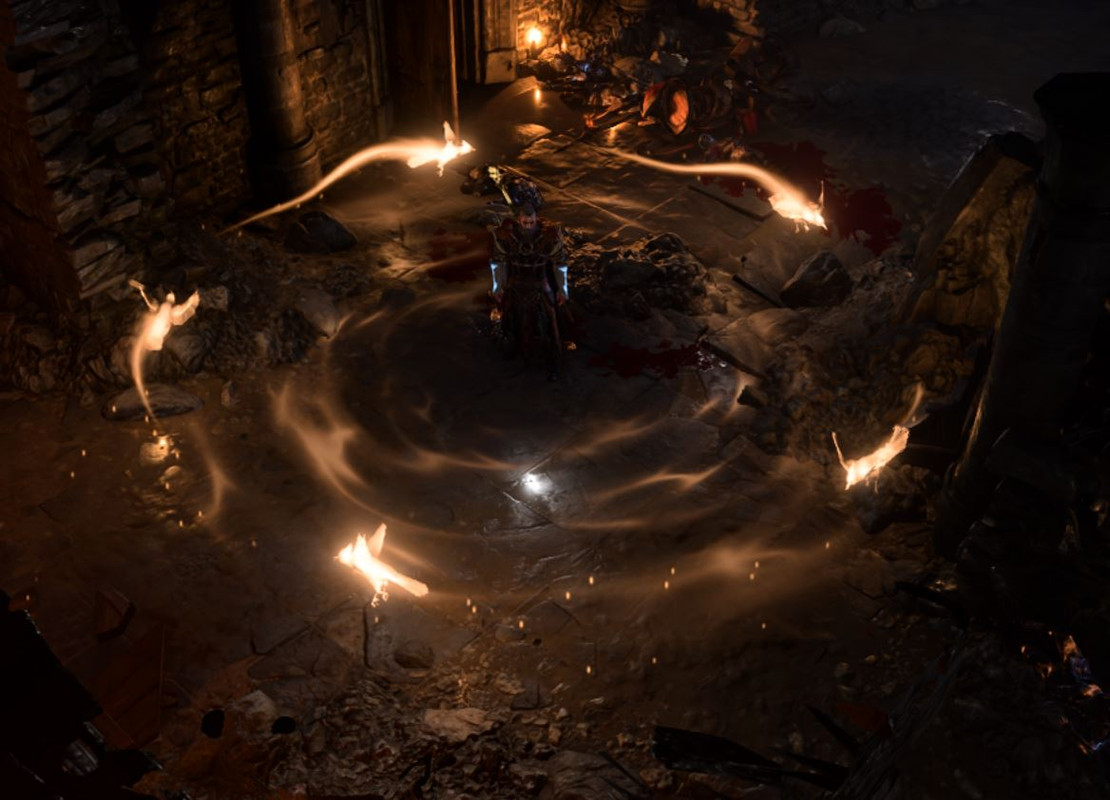Need proof that friendship is actually plenty powerful? These five combat tricks can help your party hit hard and fast!
Combat in D&D 5.5E has a little more nuance to it. Now you have things like Weapon Mastery Properties to contend with, as well as modified monsters, spells that have been made more effective, and so on. With the right party composition and teamwork, even a low level party can take on serious threats. Here are a few helpful combat tricks you can try!
Push the Enemies Into the Fire

Now, more than ever, it is easy to move your enemies around on the battlefield. The Push weapon mastery property is just one example. But you can grapple and move creatures much more easily, now. There are spells that let you push or pull enemies. Even subclass features that let you shove your foes around.
And one of the best things you can do with those abilities, is try to line them up so that not only are you hitting someone with your melee attack, you’re also hitting them into a damaging area of effect. This is made even more possible by changes to the way many of the harmful, persistent AoE spells work.
Now most harmful aoe spells deal damage whenever a creature enters the spells area of effect, once per turn. This is an important distinction. Because it means that a single enemy can be hit by the same spell multiple times over the course of a single round. Rounds are made up of turns. Take a spell like Spirit Guardians, for instance. You can hit an enemy with the initial casting of it—likely the enemy will leave so that it doesn’t take damage on its turn—and then a Fighter could push that enemy back into the Spirit Guardians area of effect and double up on the spell’s damage.
Push the Fire Onto the Enemies

Similar to the last piece of advice comes the corollary: push the fire onto your enemies. Fire in this case standing for whatever harmful effects you have. You can push an enemy into the spirit guardian zone, sure. But a Barbarian with a ton of movement could also, for instance, grapple the Cleric who has cast the spell—and then drag the Cleric nearby as many enemies as possible, subjecting them to the spell’s damage.
If you can’t bring the enemy to the fire, bring the fire to the enemy. And this works with abilities that let someone move outside of their turn as well. So being a Rogue/Cleric and being able to dash as a Reaction might let you double up on Spirit Guardian damage as you run around the battlefield over the course of multiple turns.
Take Advantage of Conditions

Conditions can be quite potent in 5.5E. Sure, they don’t always last as long as you’d like. But players have so many tools to apply to creatures. For instance, grappling applies the Restrained condition automatically whenever it is successful.
And with the right gear, you can capitalize on conditions in a big way. For instance, take the Restrained condition. With the right tools, you can transform your Utilize action into something that ruins a monster’s day. For instance, rope or manacles will let you restrain a creature until they escape, meaning you don’t have to have a dedicated grappler grappling them, so now your party can just wail on whoever you’ve just manacled.
But even just being ready to make melee attacks on the enemy your Fighter just knocked prone with their maul can make all the difference.
Tactical Double Dipping

There are a lot of ways to double up on certain class features in 5.5E. You may well be familiar with the Rogue’s Sneak Attack restriction limiting them to getting Sneak Attack damage “once per turn” – meaning if they can attack on their turn and then as a Reaction on someone else’s turn, from an attack of opportunity, say, they can get double the sneak attack damage. But there are plenty of ways to give a Rogue an attack that doesn’t use the Attack action.
A Thief Rogue, for instance, can cast a spell like True Strike as a Bonus Action from a spell scroll. This lets them make an attack (enhanced by magic) and then has their action free to ready an action to cast True Strike (which can be acquired from the Magic Initiate feat or by taking at least one level of Wizard), so they can strike twice pretty reliably with Sneak Attack.
But they’re not the only ones who can double dip. Any spellcaster that can cast a spell should know that spells aren’t limited the way they once were. It used to be that you could only cast a Cantrip if you cast another spell as a Bonus Action. But in 5.5E, the rule is: you can only cast a level 1+ spell with a spell slot once per turn. Meaning you can cast a spell as a Bonus action and then also cast a spell as a regular Action as long as you don’t need to use a spell slot for one of them.
Again, having something like a Wand or a Scroll and the ability to use it as a Bonus Action can let you (say as a Quickened spell), for instance, cast two fireballs in a single turn. Again, pretty reliably. There are a lot of ways to double dip on seemingly restricted/limited class features.
Hit ‘Em Where They’re Weak (After You Make Them Weak)

And of course, there’s always softening up your targets before you take them down. This is an especially good one for magic users. They have access to tons of spells that can leave a target vulnerable. From the Mind Sliver cantrip, which can make a target subtract -1d4 from its next saving throw, to something like Hold Person or Hex.
But other characters have options for making creatures vulnerable. It all comes down to knowing what your party can do, and then being ready to follow up/capitalize on it.
Happy adventuring!
Subscribe to our newsletter!
Get Tabletop, RPG & Pop Culture news delivered directly to your inbox.
Don’t Miss:
Read more at this site
